Most people are only familiar with the popular button or portobello mushrooms they see at the grocery store.
But there are so many different types of mushrooms to eat and for you to explore.
Some mushrooms are edible and have tastes ranging from sweet to nutty, and others even taste like lobster.
Other varieties can be used for their medicinal benefits to boost your immune system, lower blood pressure and cholesterol, and may even be useful for treating cancer and other serious diseases.
In this article, we’re going to show you 20 of the most popular varieties of mushrooms, how to use them, and show you the main categories that they fall into. And before you start cooking, be sure to check out our guide on how to cook mushrooms – the right way.
20 Different Types of Mushrooms
If you prefer to watch a video then check out this one where we cover the top 20 different types of mushrooms and their uses:
And if you prefer to read, then let’s kick things off with our list of the top 20 types of edible mushrooms and medicinal mushrooms:
1. Button Mushrooms
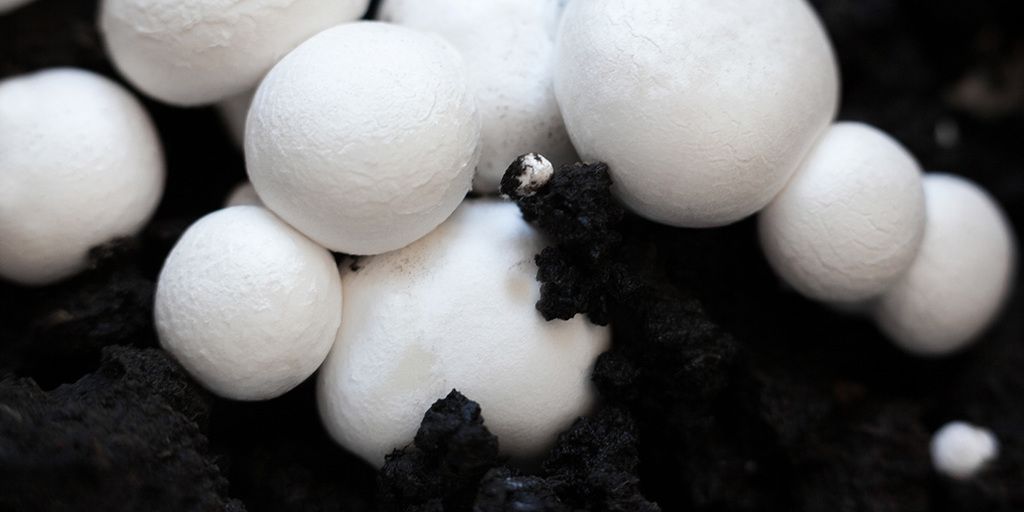
Button mushrooms are one of the most popular types of mushrooms to eat. They are also called baby mushrooms or white mushrooms. Button mushrooms are by far the most common type of mushroom that you’re almost guaranteed to find in grocery stores.
They’re sliced up and used as a topping on pizzas, in spaghetti sauces, and most other dishes that use mushrooms. If you’re a big fan of button mushrooms, you can save money and maximize flavor by growing them yourself.
Button Mushroom Recipe: Mushroom Chips
This recipe (adapted from The Produce Moms) is an excellent way to get more nutritious mushrooms into your diet at snack time.
Ingredients:
- Button mushrooms
- Olive oil
- Your favorite seasoning (we like to keep it simple with salt, pepper and garlic powder)
Directions:
- Preheat oven to 350 degrees and line a baking sheet with parchment paper.
- Toss your mushrooms in a bowl with olive oil and spices until all of the mushrooms are coated evenly.
- Bake on baking sheet for one hour until mushrooms are crunchy.
2. Cremini Mushrooms
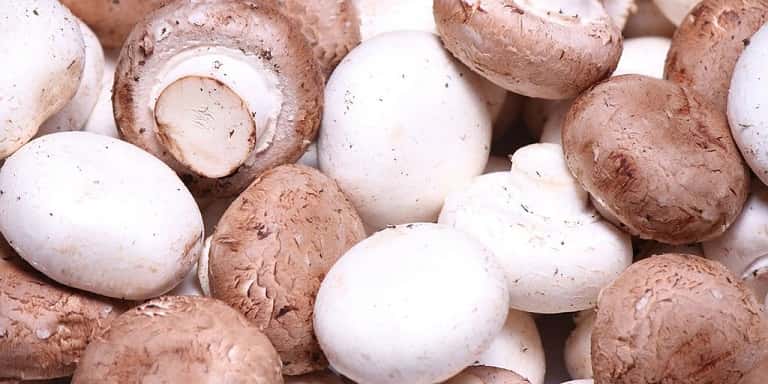
Cremini mushrooms, also called crimini mushrooms, are actually part of the same species as button mushrooms (Agaricus bisporus), but are a brown variation with a slightly deeper flavour.
And here’s a fun fact: All button mushrooms used to be brown until 1926, when a mushroom farmer in Pennsylvania found a cluster of white buttons growing in his beds, which he cloned and began selling as a new variety.
Read more about cremini mushrooms in our Complete Guide To Cremini Mushrooms here.
3. Portobello Mushrooms
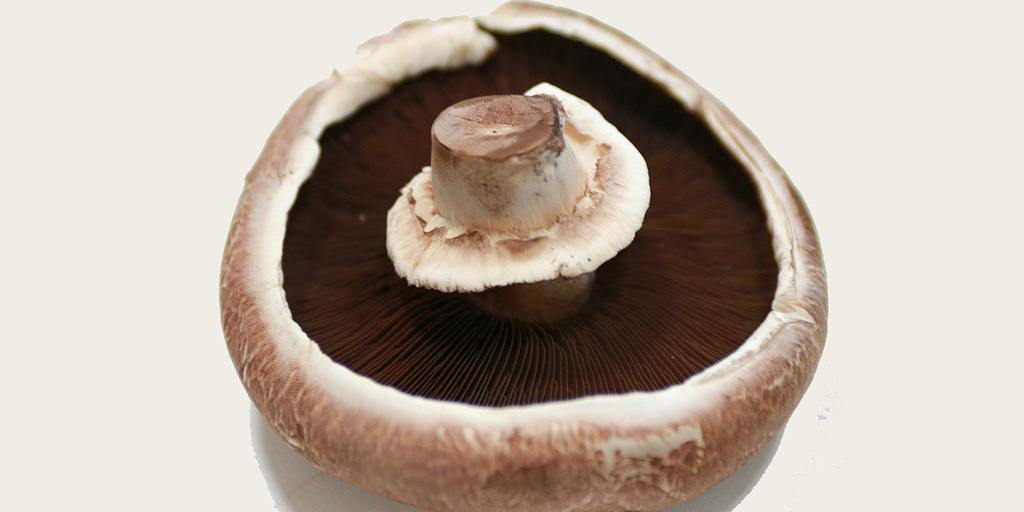
Portobellos are the final full-grown stage of the button mushroom’s life.
These mushrooms are much larger than cremini or button mushrooms and have a more meaty texture, but still retain a mild flavor. They have their cap fully open, exposing the dark gills underneath.
Portobellos are large enough to be used as vegetarian/vegan burgers or to be stuffed with other ingredients, and are often baked instead of fried.
4. Oyster Mushrooms

If you’ve only ever eaten button mushrooms, then the appearance of oyster mushrooms might be a bit intimidating at first.
Don’t worry if you don’t enjoy seafood. They might look like oysters, but they don’t taste like them.
They offer a mild and sweet flavor and make a great transition from portobellos into more adventurous types of mushrooms. Check out our Oyster mushroom recipes page for some inspiration.
If you’re interested in trying to grow mushrooms at home for yourself, oysters are one of the easier varieties to try. Check out this step-by-step guide, or consider buying a ready to fruit Oyster substrate block.
Oyster Mushroom Recipe: Skillet Garlic Oyster Mushrooms
This tasty garlic-centric dish (adapted from Spend With Pennies) makes an excellent and nutrient-dense side dish at dinner.
Ingredients:
- Oyster mushrooms
- Olive oil
- Butter
- Tamari sauce
- Herbs to garnish
Directions:
- Preheat skillet with olive oil. Add butter and garlic and cook for 30 seconds.
- Combine mushrooms with tamari in a bowl and add to skillet. Cook for about three minutes.
- Add herbs to garnish.
5. King Oyster Mushrooms
King oysters look similar to regular oyster mushrooms that are growing on top of a thick, white stem.
They’re a large mushroom, and normally come 4 or 5 to a tray. They have a very firm meaty texture compared to regular oyster mushrooms.
These mushrooms in particular show benefits for heart and immune health and, because of their size, make an excellent main dish for a vegetarian or vegan meal.
6. Chanterelle Mushrooms
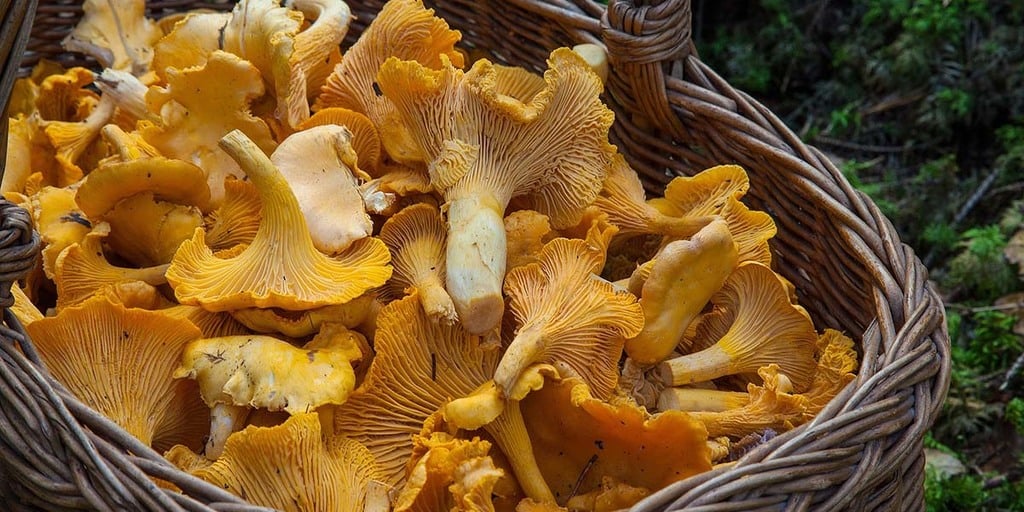
Chanterelle mushrooms have a distinctive bright yellow color. They’ve got a sweet and peppery flavor that goes well with eggs.
They last longer in the fridge than most other varieties of mushrooms: about 10 days.
There are a couple of very similar looking mushrooms called the jack o lantern and false chanterelle. If eaten, these lookalikes can cause diarrhea and severe cramps, so be sure you’re selecting the right mushrooms!
Chanterelles are excellent sauteed and are often used to add rich flavor and texture to a pasta dish.
Read the full guide to Chanterelle Mushrooms to learn how to identify them, how to grow them, what to cook them with, and more.
7. Porcini Mushrooms
Porcini, also known as Cep mushrooms, are most commonly used in Italian cooking.
They’ve got a distinctive taste that some people compare to sourdough bread, with slightly creamy and nutty flavors. They can get very large: up to 10 inches (.25 meters) across! But most are harvested much smaller, around 1 inch (.03 meters) in size.
Porcini mushrooms can be bought fresh or canned, but are most commonly sold dried. To use dried porcini, you need to soak them in hot water for 10 to 15 minutes and then they can be cooked like normal.
8. Hedgehog Mushrooms
Hedgehog or sweet tooth mushrooms get their name from the gills underneath their cap. They hang down, forming spiky shapes that resemble a hedgehog.
Hedgehog mushrooms are quite safe to harvest, since there aren’t any poisonous lookalikes.
They have a sweet, nutty taste and offer a crunchy texture if cooked correctly. They can be sauteed, pickled, or simmered in milk or stock.
Hedgehog Mushroom Recipe: Wild Mushroom Soup
This soup recipe (adapted from Nordic Forest Foods) can be made with nearly any type of edible mushroom, but it is especially delicious when it features the hedgehog.
Ingredients:
- 1 cup mirepoix
- Several cloves of garlic, minced
- Butter or olive oil
- About a pound of hedgehog mushrooms
- One liter of vegetable stock
- 1/4 cup heavy cream
Directions:
- Saute mirepoix with butter or oil in a pan for two minutes.
- Add mushrooms and saute for 10 minutes.
- Add vegetable stock and and allow to simmer for five minutes
- Add heavy cream before serving
9. Chicken Of The Woods Mushrooms
Chicken Of The Woods is more scientifically called Laetiporus which means “with bright pores.”
This mushroom grows in clusters on the side of trees and is a beautiful orange color. Normally these mushrooms are deep orange in the middle with a lighter orange color around the edges.
As you might expect, this mushroom gets its name because many people think it tastes like chicken. In fact, you can cook it many of the same ways that you’d prepare chicken. This makes it a great meat substitute for vegetarians or vegans who crave fried “chicken”
10. Black Trumpet Mushrooms
Black trumpets are sometimes called black chanterelles.
They aren’t a very attractive mushroom to look at, but their flavor is quite sought after. People describe the flavor as rich and smoky. When allowed to dry, their flavor even takes on hints of black truffle–a very luxurious mushroom.
There aren’t any poisonous lookalikes, so they’re a good one for beginners to identify if you’re out mushroom foraging. Although, they can be quite hard to find. If you do come across some, try caramelizing them and adding them to pasta.
11. Wood Blewit Mushrooms
Wood blewits are considered edible, although they may cause allergic reactions in some people. This is especially true when they are eaten raw, although they can cause reactions even when cooked. So it’s best to start by eating small amounts.
They can be found wild, and are also cultivated in places like the UK, France, and the Netherlands. Blewits can be eaten sauteed in butter or in a cream sauce, as an omelette filling, or in a stew.
12. Morel Mushrooms
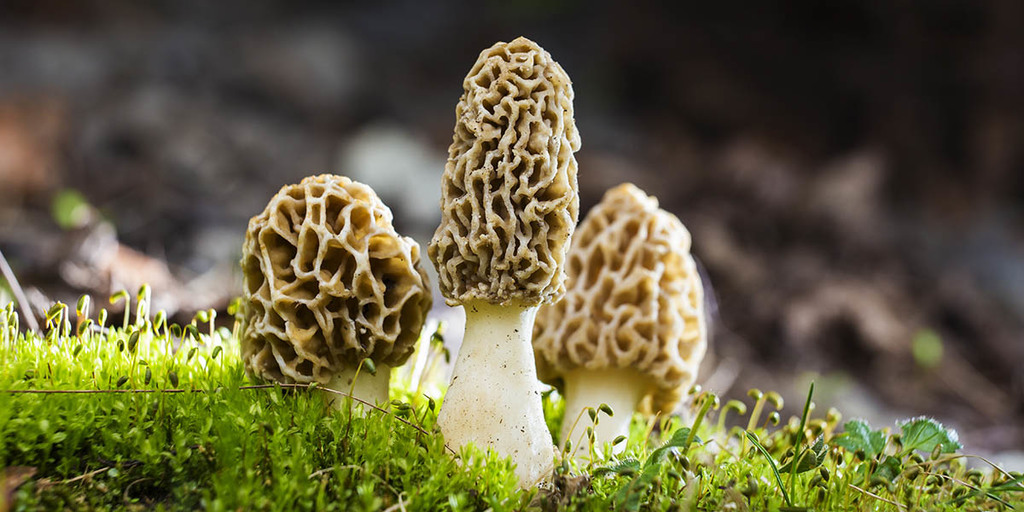
Morels are some of the most sought after wild mushrooms. They aren’t farmed and sold in stores.
In fact, families will often have secret “morel spots” where they know these mushrooms grow that they’ll keep for themselves, going each year to harvest these delicious mushrooms.
Morels have a nutty, earthy flavor. They have a meaty texture but they’re still tender.
There are “true morels” and poisonous “false morels”, so if you’re going looking for them, it’s important to know the difference.
Read my full guide to Morel Mushrooms and learn what morel mushrooms are, where they grow, and how to find them.
Morel Mushrooms Recipe: Fried Morels
This recipe (adapted from allrecipes) is perfect when you’re craving something indulgent but still want the benefit of nutritious mushrooms.
Ingredients:
- 1/2 pound morel mushrooms
- 1/2 cup flour
- 1/2 cup vegetable shortening
Directions:
- Heat vegetable shortening in a pan.
- Coat mushrooms in flour.
- Pan fry mushrooms in vegetable shortening for 5 minutes on each side.
13. Enoki Mushrooms
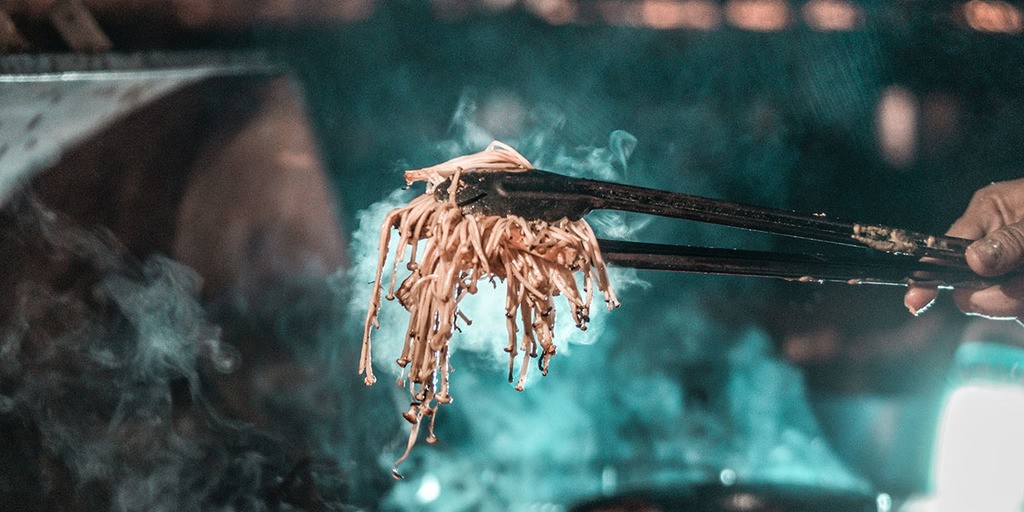
You can often spot enoki mushrooms in the supermarket.
These mushrooms are most commonly used in Asian cooking. They come in large clusters of tiny mushrooms with very long stems and small caps. They go nicely in soups, especially ramen.
14. Shimeji Mushrooms
Shimeji is another mushroom native to East Asia, but they can also be found in Northern Europe.
They are also known as white beech mushrooms. They add a rich umami flavor to dishes.
However, they taste quite bitter when eaten raw, so they should always be cooked. They go great in stir fries or with seafood or wild game.
15. Shiitake Mushrooms
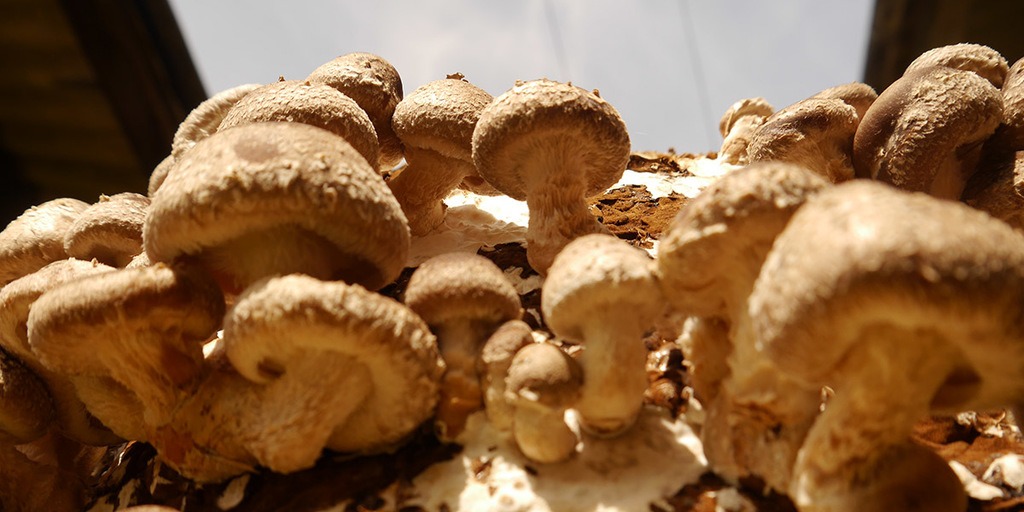
Shiitake mushrooms are commonly used in Asian cuisine. They are also considered to have medicinal benefits in traditional Asian medicine.
Shiitake mushrooms have a meaty texture much like portobellos. They have a more smoky, earthy flavor when cooked. Shiitake mushrooms are most commonly sold dried.
If you want to get started growing Shiitake mushrooms in the easiest possible way, then consider a ready-to-fruit Shiitake substrate block, which comes fully colonised and ready to grow.
16. Maitake Mushrooms

Maitake mushrooms are also called hen-of-the-woods. However, they shouldn’t be confused with chicken of the woods mushrooms. Nor with shiitakes, which also have a similar sounding name.
Maitake means “dancing mushroom” in Japanese.
These mushrooms are too tough to eat once they reach any reasonable size. However, they’re used for their medicinal properties.
Maitake mushrooms have been shown to boost the immune system. They also have a hypoglycemic effect that can help with lowering blood sugar and managing diabetes, and can also help with high cholesterol.
- Read the full guide Hen of The Woods (Maitake) mushrooms to learn what maitake mushrooms are, how to identify them, and how to forage for them or try to grow them yourself.
Maitake Mushrooms Recipe: Roasted Maitake
This recipe (adapted from Forager Chef) is a simple, warm and comforting way to enjoy Maitake mushrooms.
Ingredients:
- 6 ounces maitake mushrooms
- 2 tablespoons cooking oil
- Salt, pepper and garlic powder
Directions:
- Preheat oven to 425 F.
- Toss mushrooms with oil, salt, garlic and pepper.
- Spread on baking sheet and roast for 25 to 30 minutes, flipping halfway through.
17. Reishi Mushrooms
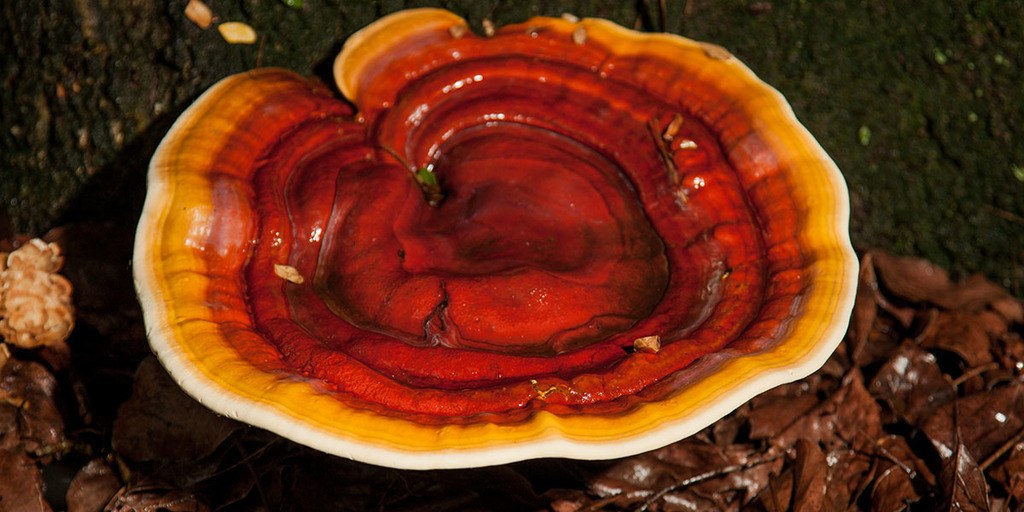
The reishi or lingzhi mushroom is often considered the gold standard when it comes to medicinal mushrooms.
It’s a polypore, which means it’s a tough cork-like mushroom that grows on the side of trees and is to tough to eat. It’s quite rare in the wild, but luckily it is now cultivated on hardwood logs or sawdust on a commercial scale.
Not all effects of reishi mushrooms have been scientifically tested, but some purported uses include treating fatigue, lowering cholesterol, boosting the immune system (even sometimes claimed to be able to fight HIV and AIDs), lowering blood pressure and inflammation, and to treat lower urinary tract symptoms.
18. Lion’s Mane Mushrooms
Lion’s mane grows in shaggy clumps on the side of trees and can look a bit like stalactite formations that hang inside of caves.
Lion’s mane is purported to boost concentration and mood, keep the brain healthy, support the immune system, and decrease inflammation in the body.
Unlike most medicinal mushrooms, lion’s mane is actually edible. It has a stringy meat texture and a sweet savory flavor that’s compared to lobster or crab meat.
You can learn to grow Lion’s Mane yourself at home, or even buy a ready-to-fruit Lion’s Mane substrate block, which comes fully colonised and ready to grow.
19. Matsutake Mushrooms
The matsutake mushroom, or pine mushroom, isn’t very well known in the West. But it’s a highly prized mushroom in Chinese, Korean, and Japanese cuisine. It has a distinctive spicy odor.
Matsutake mushrooms can be hard to find since they grow under specific trees and are normally hidden by leaves and other brush on the forest floor.
They’re also quickly eaten by rabbits, deer, squirrel, and other wildlife if they find them first.
The highest grade of Japanese matsutake mushrooms from the beginning of the season can fetch prices as high as $1,000 per kilogram (about $455 per pound.) Although imported matsutake normally sells for around $90 per kilogram ($41 per pound.)
20. Giant Puffball Mushrooms
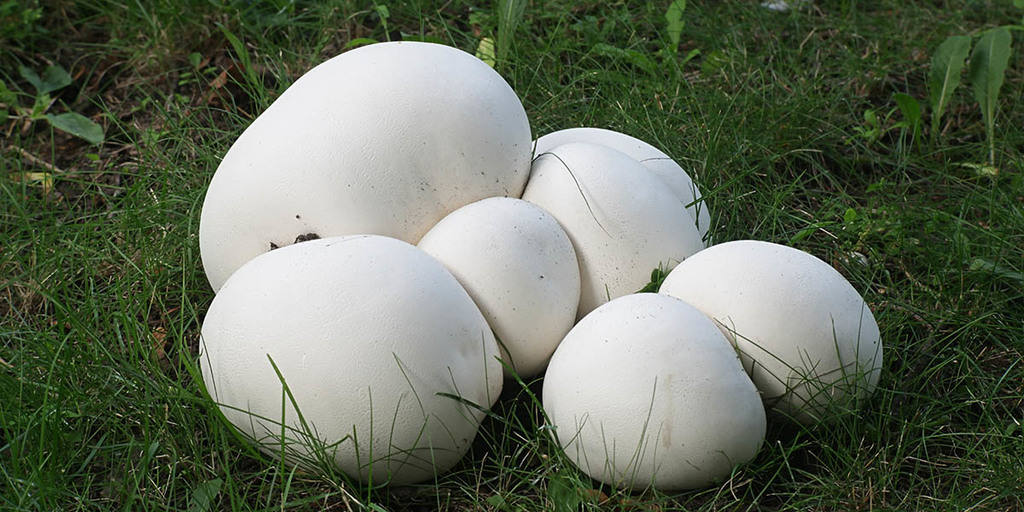
Puffball mushrooms can grow to huge sizes. Up to 20 kg or 44 lbs in weight! However, they’re picked while still small and immature for culinary use.
Once the flesh of a puffball turns yellow or brown, it has begun to create spores which can cause stomach upset.
Puffballs can be confused with the immature versions of poisonous mushrooms, and they need to be cut open to verify before eating.
Edible puffballs have a solid white interior, while other mushrooms will be yellowish inside or have the silhouette of a cap-type mushroom.
If allowed to grow to full size, puffball mushrooms will burst, sending trillions of spores into the air.
- Read my Puffball Mushrooms: The Ultimate Guide to learn more about puffballs, how to identify and cook them.
Different Categories Of Mushrooms
How many types of mushrooms are there? Over 10,000. But all of these mushrooms fall into a few broad categories.
There is also quite a bit of overlap between categories. Mushrooms will often fall into multiple different areas.
For example, oyster mushrooms are widely cultivated but they also grow wild and can be found in nature.
1) Cultivated Mushrooms
Cultivated mushrooms are ones that are grown commercially.
Mushroom farmers use a number of different methods and setups to consistently produce mushrooms for market.
Lots of farmers use very expensive equipment but we are big fans of growing mushrooms the Low Tech Way. See how we grow mushrooms in this short tour of our low tech mushroom farm:
Cultivated mushrooms include any that you can find at the grocery store like button mushrooms, portobello, cremini, oyster mushrooms, enoki, and others.
You an learn more about growing mushrooms if these guides:
2) Wild Mushrooms
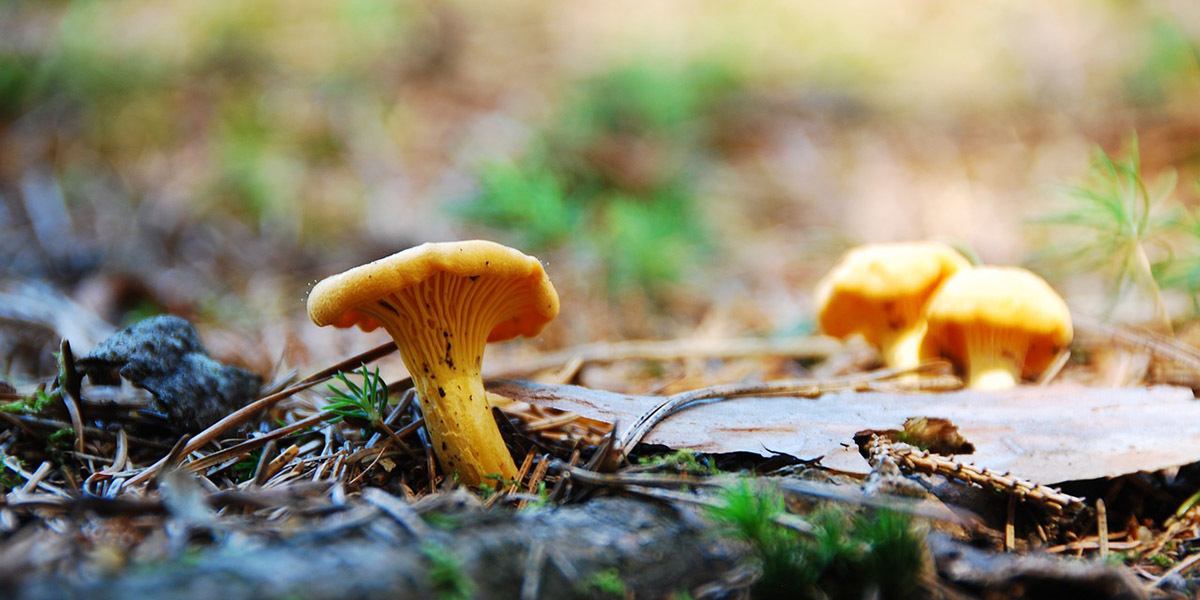
Wild mushrooms are those harvested by mushroom hunters and foragers from nature.
Some varieties of mushrooms only grow on the live root systems of certain species of trees, or have other characteristics that make them nearly impossible to cultivate in a large-scale agricultural setting.
Some popular wild mushrooms include truffles, morels, and chanterelle mushrooms.
It’s important only to harvest wild mushrooms if you know what you’re doing or are mushroom hunting with an expert that can positively identify the specimens you find.
There are many poisonous wild mushrooms that look identical to edible wild mushrooms unless you know exactly what differences to look for.
There’s a common saying: “There are old mushroom hunters, and there are brave mushroom hunters. But there are no old, brave mushroom hunters.”
3) Medicinal Mushrooms
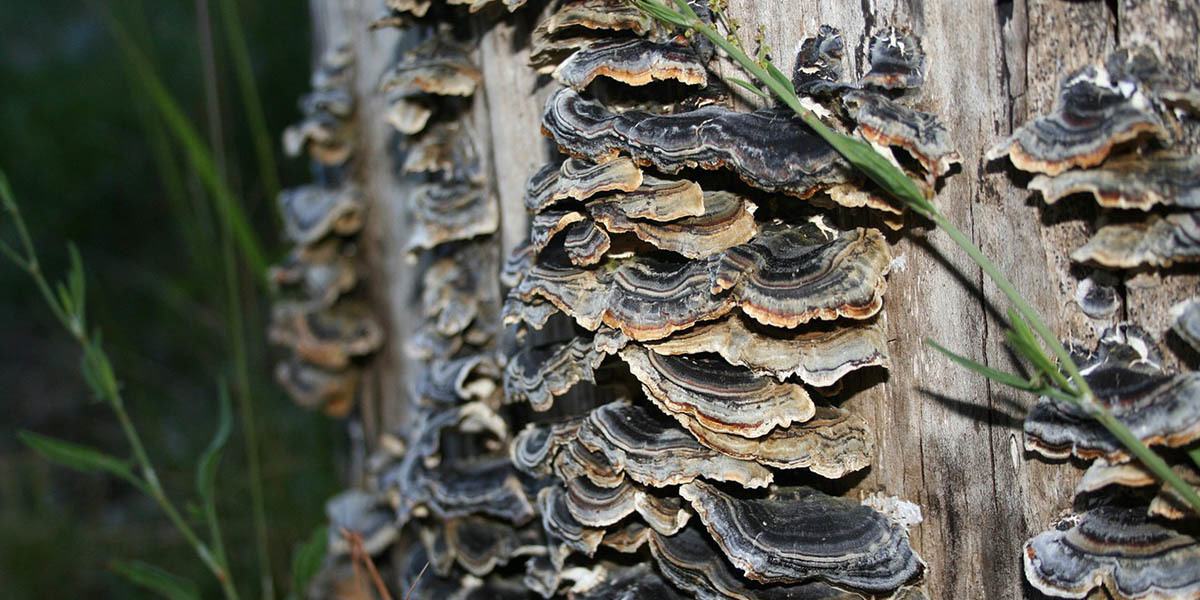
Some varieties of mushrooms have long been used for their medicinal benefits. Some popular edible mushrooms have medicinal properties, such as Shiitake, Tremella and Maiitake. Others are too woody or bitter to eat, and are instead made into tea or taken in capsules.
Medicinal fungi have been scientifically proven to offer a number of benefits and applications. Including in treating cancer, reducing cholesterol, as antibacterial and antifungal agents, and much more.
Good examples of medicinal fungi include reishi, chaga, and turkey tail mushrooms.
- Check out my ultimate guide to Medicinal Mushrooms for more info.
4) Psychoactive Mushrooms
Psychoactive mushrooms are commonly referred to as “magic mushrooms.” These mushrooms have psychotropic effects. Most contain a psychoactive ingredient called psilocybin.
These types of mushrooms are illegal in many countries so be sure to check the law in your local area, however there have been a wave of countries and US states that have decriminalized psilocybin mushrooms recently, with the prospects of psychoactive therapy on the horizon.
For more info on magic mushrooms, check out these useful resources at Double Blind.
5) Poisonous Mushrooms
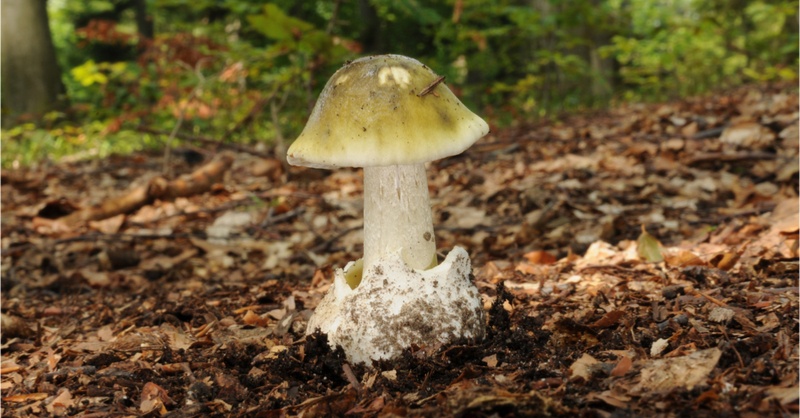
There are lots of poisonous species of mushrooms in the wild, which is why it’s very important to positively identify mushrooms before eating them.
Some of the most poisonous species, like the Amanita bisporigera (aptly named the “destroying angel”) look very similar to edible mushrooms. In different stages of development, they can easily be confused with button mushrooms, puffballs, or other edibles.
The effects of poisonous mushrooms can range from simply making you very ill to causing irreversible damage to your liver and kidneys.
6) Useful Mushrooms

Some varieties of mushrooms aren’t ingested at all, but are used for other purposes instead.
For hundreds of years, people in Europe (especially in Slovenia and surrounding area) traditionally used Amanita muscaria mushrooms as fly traps.
Which is why they have the name “fly agaric.” The mushrooms are soaked in milk, which attracts flies who eat the mushroom and drink the milk and subsequently die.
Mushrooms are also used for bioremediation, or cleaning up the environment. They’re able to break down oil and other environmental contaminants. Fungus can also help to make better compost.
Scientists are researching many new ways to use mushrooms and coming up with new fungi-based inventions every year. Including using mushrooms in biofuels, packaging, cleaning products, textiles, and even as building materials!
Classifying Mushrooms Based On How They Grow

In addition to classifying mushrooms into categories like wild, cultivated, poisonous, etc. we can also organize them a more scientific way. By how they grow, and what they feed on.
1) Saprotrophic Mushrooms
These kinds of mushrooms grow on dead matter. They release enzymes and acids that break tissue down into smaller pieces that they can absorb and get nutrients from.
Saprotrophic mushrooms can grow on decaying plants, wood, and even dead animals. Saprotrophs are an important part of the food chain and are a big reason why there isn’t dead matter laying all over the ground.
These mushrooms recycle dead material into soil and compost.
Saprotrophs include some of the most common mushrooms we’ve talked about so far. Including oysters, button mushrooms, shiitake, reishi, morels, puffballs, enoki, and more.
2) Mycorrhizal Mushrooms
These are mushrooms that have a symbiotic relationship with trees and other plants. The mycelium (basically the roots of mushrooms) weave themselves into the roots of other plants.
The mushrooms give extra moisture and other nutrients to the plants they pair with. And in return, the plant gives them sugars in return.
We’re just now starting to learn what a huge benefit mycorrhizal fungi have on plants.
They allow them to grow stronger, larger, and faster.
In fact, it’s estimated that 95% of plants take advantage of beneficial relationships with mycorrhizal fungi.
Some common mycorrhizal mushrooms include truffles, porcini, chanterelles, and matsutake.
3) Parasitic Mushrooms

Unlike mycorrhizal mushrooms, the parasitic mushrooms just take and don’t give anything back. Given enough time, a parasitic mushroom will completely infect its host plant and kill it.
Some parasitic mushrooms include chaga, lion’s mane, and honey fungus.
Parasitic mushrooms don’t just limit themselves to trees and plants though. The caterpillar fungus (cordyceps sinesis) preys on insects, killing them and eventually growing out of their heads!
4) Endophytes
Endophytic fungi are still a bit of a mystery to scientists. They invade plant tissue like a parasitic mushroom. But the plant stays healthy and seems to gain an increased immunity to disease and absorbs nutrients more easily.
However, endophytes are also considered mycorrhizal since they can be cultivated without a host plant to grow inside of as well.
Some endophytes produce mushrooms, while others never emerge from their host until it dies.
There is still a lot of study going on surrounding endophytes, and it’s expected that some saprophytic or parasitic fungi will likely be recategorized as endophytes in the future as we determine exactly what defines these curious fungi.
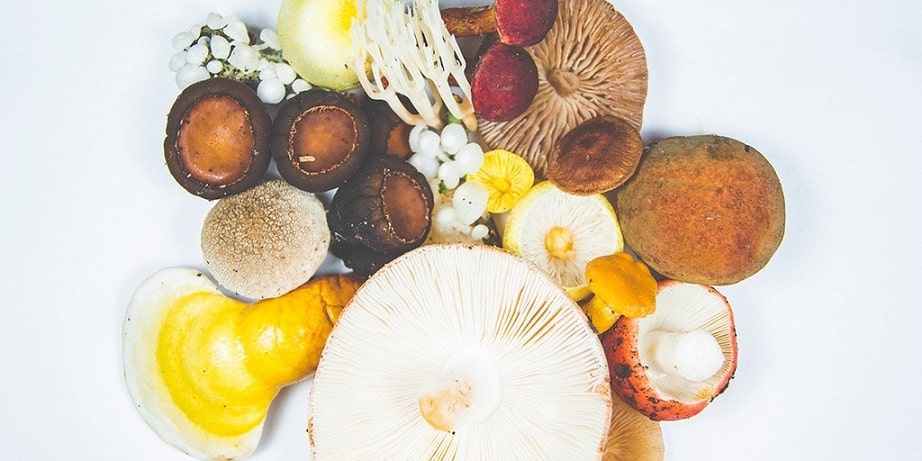
Pingback: Identities and Place #7: Research 3 – weerada n.
Pingback: What You Need To Know About Eating Mushrooms